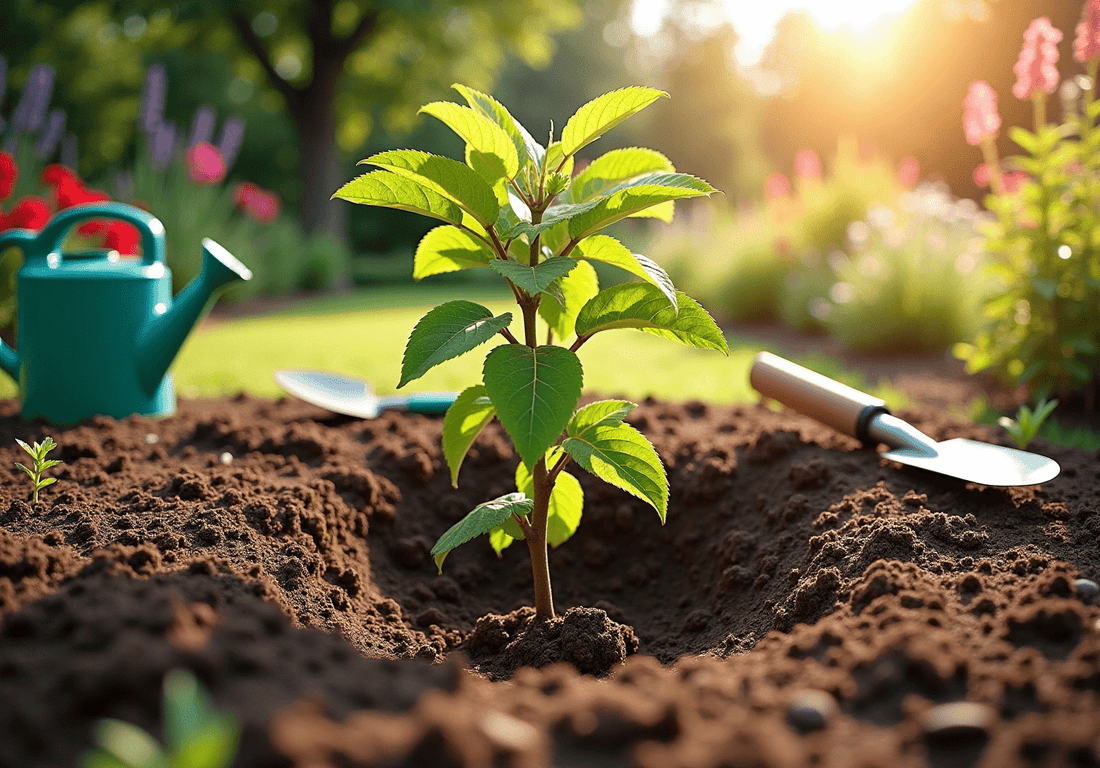
Guyana Cherry Tree: Steps for Planting and Care
Share
This article offers vital steps for planting and nurturing a Guyana cherry tree, focusing on key aspects such as site selection, soil preparation, and ongoing maintenance practices. We understand that gardening can present challenges, but with the right guidance, you can create a thriving environment for your tree. Adequate sunlight, proper watering, and effective pest management are essential components that collectively ensure your tree's healthy growth and fruitful production. By embracing these practices, you're not just caring for a plant; you're cultivating a rewarding experience that brings joy and satisfaction. Together, let's explore how to nurture your Guyana cherry tree and enjoy the fruits of your labor.
🍒 Ready to grow your own Barbados Cherry (also known as Acerola or Guyana Cherry)? Shop the tree now or explore all fruit trees at Everglades Farm.
- Select the perfect location
- Make necessary soil amendments
- Troubleshoot common issues
1. Prepare Your Site for Planting
-
Choosing the right location for your Guyana cherry tree is crucial. Look for a site that basks in full sun for at least 6-8 hours daily. This tree truly thrives in warm climates, and sufficient sunlight is key to a fruitful yield. If your garden has limited sunlight, don’t worry! There are shade-tolerant varieties that can flourish with just four hours of sunlight each day.
-
Check Earth Quality: The health of your tree begins with the ground. Ensure your soil is well-draining and has a slightly acidic to neutral pH (6.0-7.0). Testing your soil’s pH with a home kit is a simple way to assess its suitability. If it’s too acidic, adding lime can help raise the pH to optimal levels for growth. Remember, maintaining the right soil conditions is essential for the vibrant growth and fruiting of your passion fruit as well.
-
Clear the Area: Before planting, take a moment to clear the area of any weeds, grass, or debris. This step minimizes competition for nutrients and water, which is vital for the healthy establishment of your tree. A clean planting area also encourages better air circulation, helping to reduce pest issues for both soursop and passion fruit.
-
Improve the Ground: If your soil is dense clay or sandy, don’t fret! You can enhance it by incorporating organic material like compost or well-decomposed manure. Aim to mix about 2-4 inches of organic material into the top 12 inches of soil. This will improve its structure and fertility, promoting robust root development for both soursop and passion fruit.
- Dig the Planting Hole: When you're ready to plant, create a hole that is twice as wide and as deep as the root ball of your tree. This allows the roots to spread easily, establishing a strong foundation for growth. Proper site preparation is essential for the long-term health and productivity of your Guyana cherry tree, ensuring success in your tropical gardening journey alongside soursop and passion fruit.
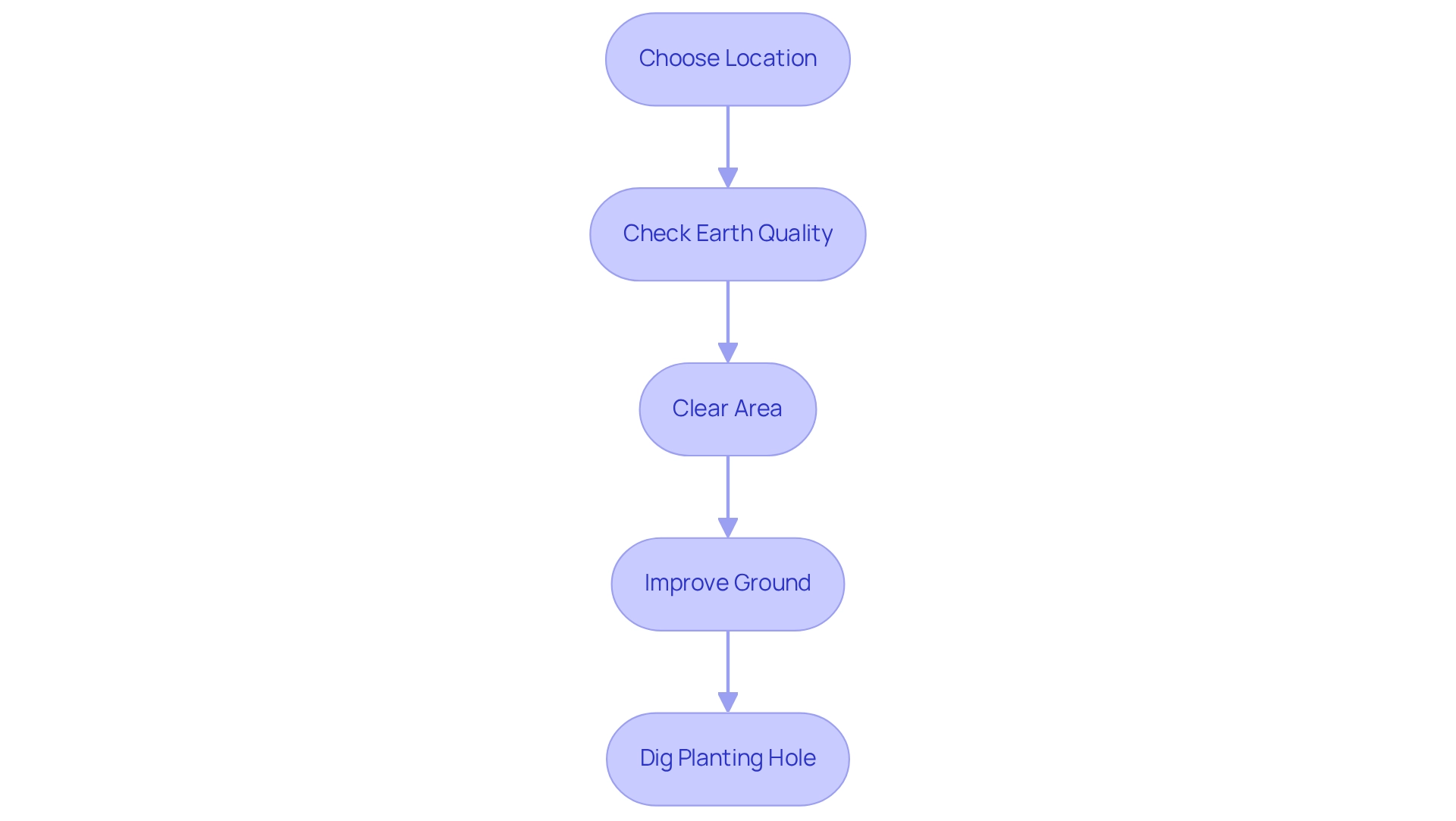
2. Plant the Guyana Cherry Tree
-
Place the Plant: Begin by centering the plant in the hole, ensuring that the top of the root ball is level with the surrounding earth. It's important to avoid planting too deep, as this can suffocate the roots and hinder growth. For soursop trees, selecting a sunny spot with well-drained ground is essential for optimal growth.
-
Backfill the Hole: Gently refill the hole with the original earth, packing it around the roots to eliminate air pockets. As you backfill, water the soil to promote settling and ensure good contact with the roots. This practice is crucial for both soursop and passion plants, as it helps establish a strong foundation.
-
Water Thoroughly: After planting, give the plant a deep watering to establish the roots. Aim for water penetration to a depth of at least 12 inches, which is vital for young tropical fruit plants to flourish. It's important to maintain steady irrigation at this stage, especially for soursop, which prefers consistent moisture.
-
Mulch the Area: Apply a 2-3 inch layer of organic mulch around the base of the tree, making sure to keep it a few inches away from the trunk. This practice helps retain moisture, suppress weeds, and regulate soil temperature, creating an optimal environment for growth. For passion fruit, mulching can also help prevent pests and diseases.
- Staking (if necessary): If the plant is tall or located in a windy area, consider staking it for additional support. Use soft ties to avoid damaging the bark, ensuring the plant remains stable as it establishes itself. This step is particularly crucial for young soursop trees that might be more vulnerable to wind damage.
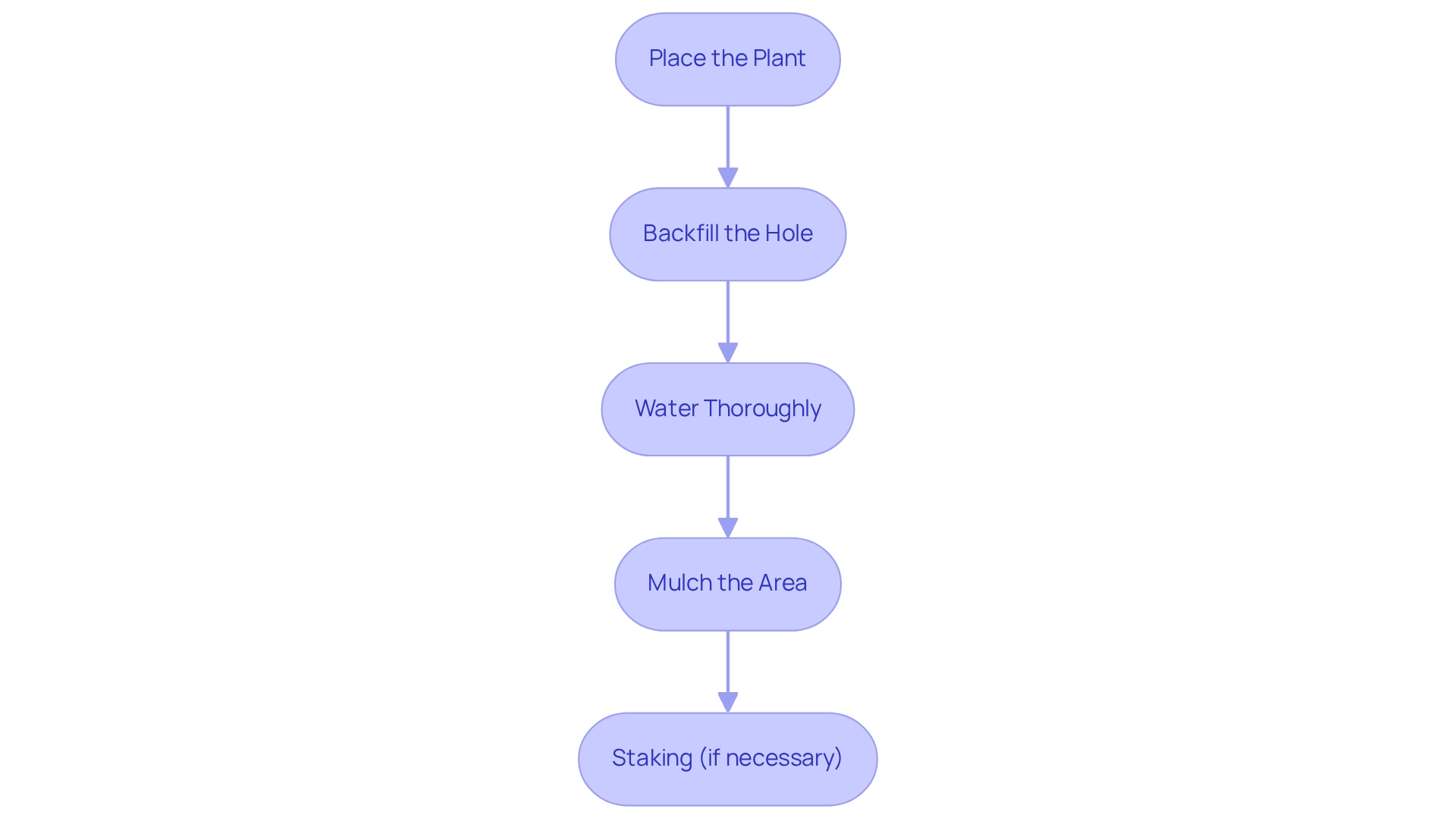
3. Care for Your Guyana Cherry Tree
-
Consistent watering is vital for young Guyana cherry trees, especially during dry spells. We recommend aiming for about 1-2 inches of water each week to nurture healthy growth. As your tree matures, you can reduce the frequency of watering, but it's important to ensure the soil doesn't dry out completely.
-
Fertilizing: During the growing season, applying a balanced fertilizer designed for fruit plants is essential. By following the manufacturer's instructions, which typically suggest every 6-8 weeks, you can ensure your tree has optimal nutrient availability to thrive.
-
Pruning: Annual pruning is a wonderful practice to remove any dead or diseased branches and shape your tree. This not only promotes healthy growth but also enhances air circulation, which is crucial for preventing disease.
-
Pest Management: Regularly monitoring for common pests like aphids and scale insects is key to maintaining your tree's health. If you notice any infestations, consider treating them with organic insecticidal soap or neem oil. Additionally, keep a close eye on the leaves and fruit for any signs of pests or diseases. Implementing organic pest control strategies, such as early identification and management, will help protect your Guyana cherry tree effectively.
- Harvesting: Typically, the Guyana cherry tree starts producing fruit within 2-3 years. For the best flavor, harvest the cherries when they are bright red and slightly soft to the touch, signaling ripeness.
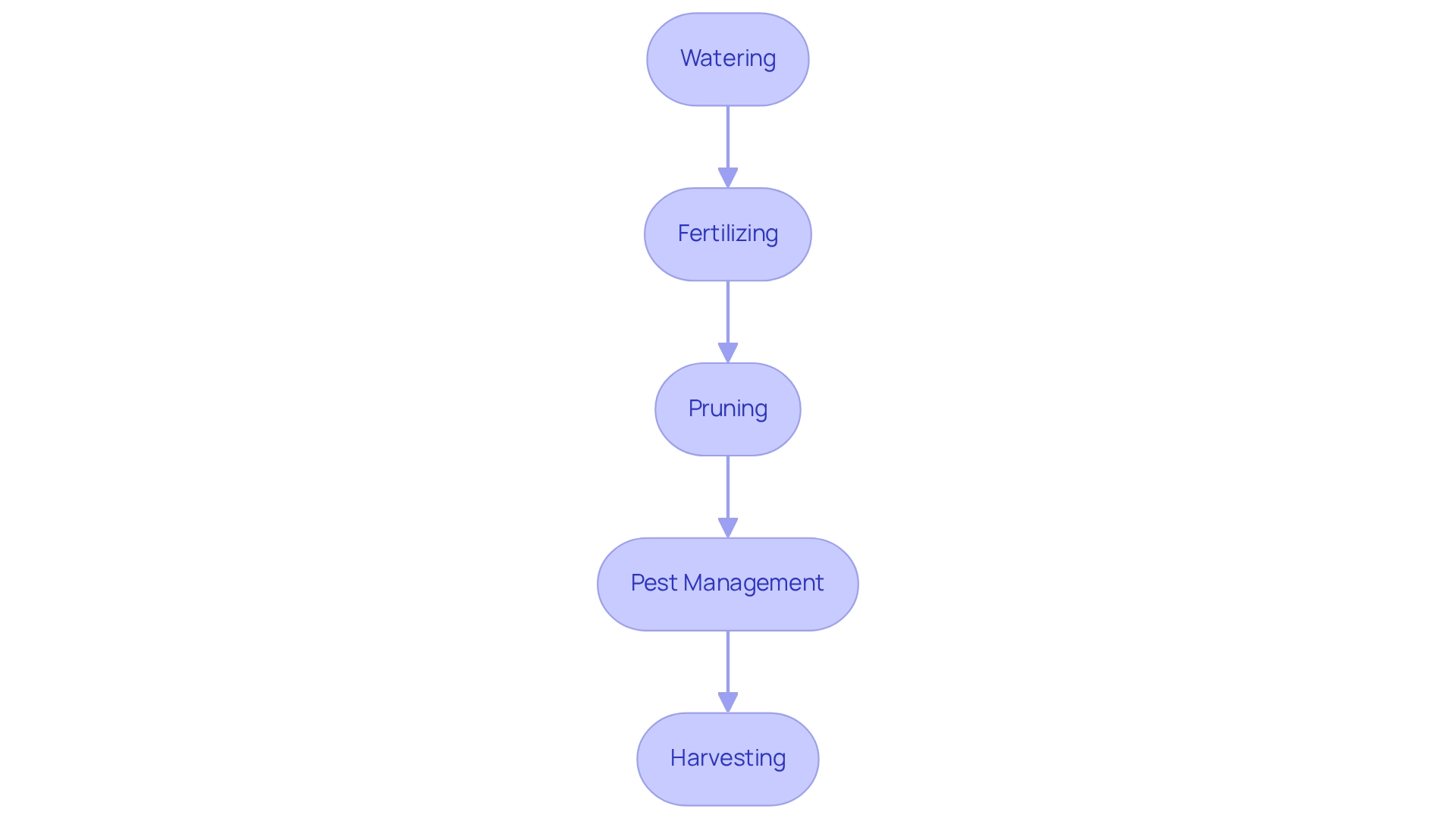
4. Troubleshoot Common Growing Issues
Troubleshoot Common Growing Issues
-
Leaf Discoloration: Have you noticed yellowing leaves on your plants? This often signals overwatering or nutrient deficiencies. Interestingly, 17.4% of new gardeners began growing food at home during the COVID-19 pandemic, reflecting a growing interest in nurturing our own green spaces. To address leaf discoloration, take a moment to evaluate the moisture levels in your soil, and consider using a balanced fertilizer to restore nutrient equilibrium. Regular soil testing can also be a helpful tool in identifying specific nutrient deficiencies, guiding you towards healthier plants.
-
Poor Produce Production: If your plants aren't yielding as much produce as you'd hoped, it could be due to insufficient sunlight or nutrients. Ensure your tree receives at least six hours of sunlight each day, and enhance nutrient availability through proper fertilization. Pruning can also play a vital role; it improves air circulation and removes competing branches that may hinder growth. Case studies from Victorian Gardens have shown that proper pruning techniques can significantly boost fruit production, giving you the bounty you desire.
-
Pest Infestations: When pests make an appearance, acting quickly is essential. You can use organic treatments like neem oil or insecticidal soap to manage infestations effectively. Regular inspections of your tree can help you catch any pest issues early, minimizing potential damage. Experts recommend integrating pest management strategies to maintain a healthy garden ecosystem, ensuring your plants thrive.
-
Wilting Leaves: If you see wilting leaves, it may indicate underwatering or root rot. Check the ground moisture; if it’s too dry, provide deep watering. On the other hand, if the ground is overly saturated, it’s time to reduce watering frequency and enhance drainage to prevent root issues. Keep in mind that environmental factors, such as temperature and humidity, can also impact soil moisture levels, so be mindful of your local conditions.
- Fungal Issues: Fungal diseases can show up as leaf spots or blight, which can be concerning. To alleviate these issues, ensure there’s sufficient air circulation around the plant and avoid overhead watering, as this can encourage fungal growth. If necessary, apply a fungicide specifically marked for use on fruit-bearing plants to manage outbreaks. Janet Music emphasizes the importance of maintaining a clean garden environment to prevent fungal infections, creating a healthier space for your plants. By understanding these common challenges and their solutions, you can significantly enhance the health and productivity of your tropical fruit trees, particularly the Guyana Cherry Tree. Remember, by addressing these issues proactively, you’re not just tending to your garden; you’re nurturing a vibrant, fruitful environment that brings joy and sustenance.
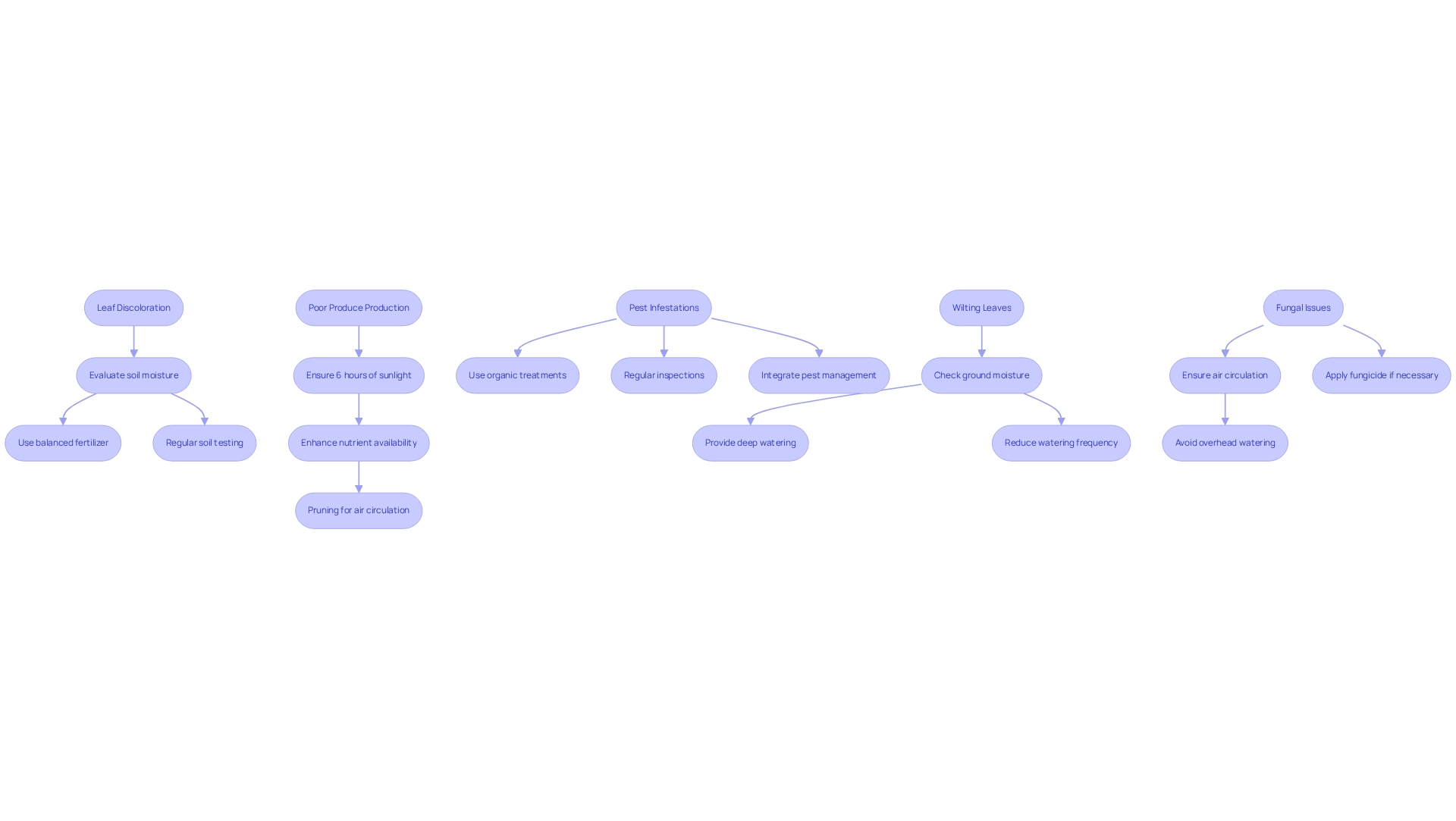
🌴 Want expert advice? We’ve got tons of helpful articles on planting tips and care guides on our blog.
Conclusion
🍒 Ready to Grow Your Own Barbados Cherry Tree?
From site prep to pest control, you now know exactly how to help your Guyana Cherry Tree thrive. This tropical beauty doesn’t just bring charm to your backyard—it rewards you with vitamin-rich, tangy-sweet cherries.
👉 Order your tree today and start your tropical gardening journey with Everglades Farm.
Frequently Asked Questions
What is the ideal location for planting a Guyana cherry tree?
How can I check the quality of the soil for my Guyana cherry tree?
Why is it important to clear the planting area before planting?
How can I improve poor soil conditions for my Guyana cherry tree?
What size should the planting hole be for a Guyana cherry tree?


